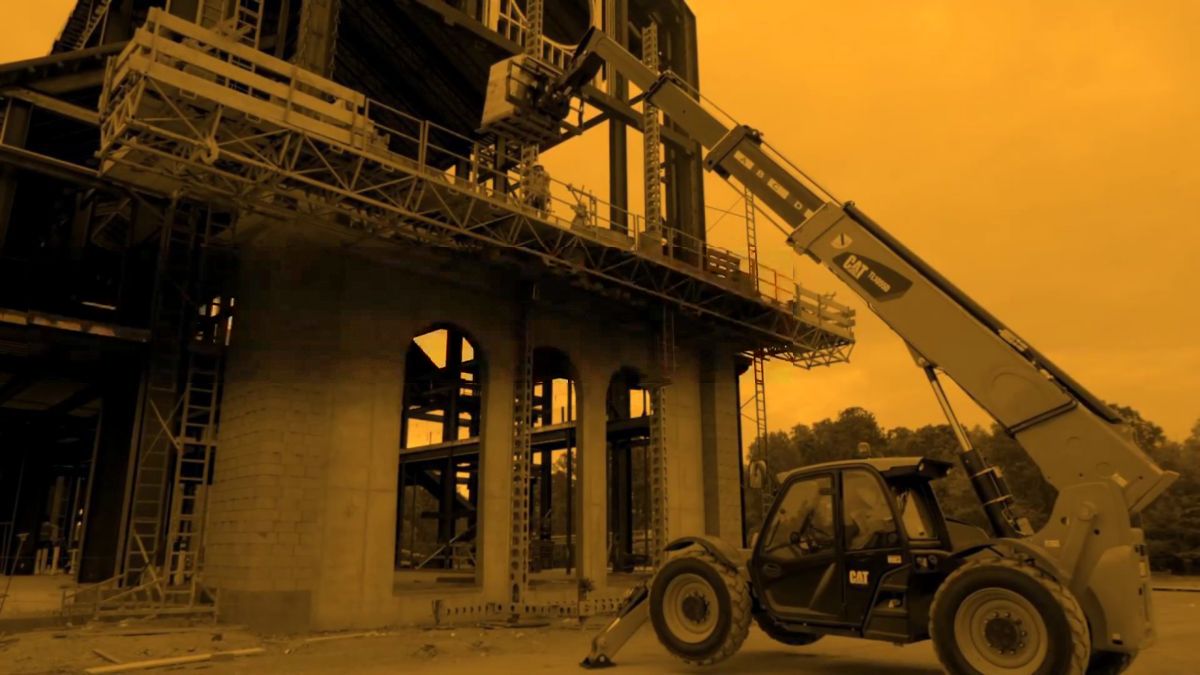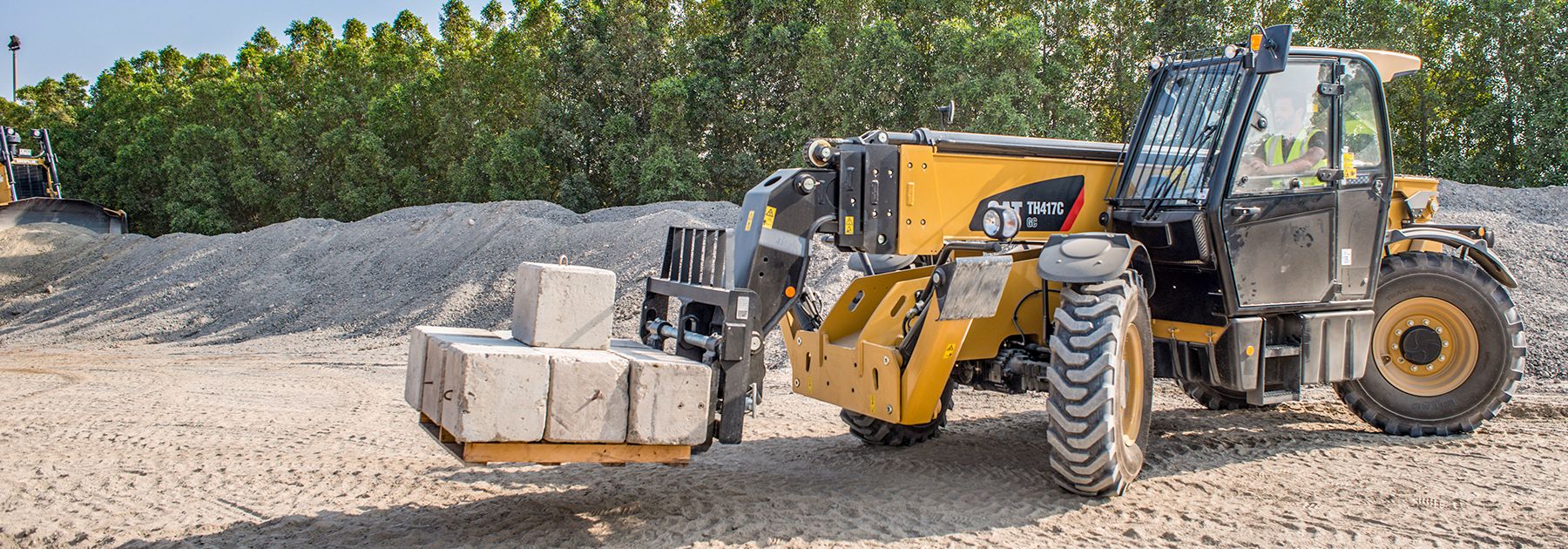

Sign In
Welcome! Sign In to personalize your Cat.com experience
If you already have an existing account with another Cat App, you can use the same account to sign in here
Register Now
One Account. All of Cat.
Your Caterpillar account is the single account you use to log in to select services and applications we offer. Shop for parts and machines online, manage your fleet, go mobile, and more.
Account Information
Site Settings
Security
Cat® Telehandler: Outriggers
Above all other machines, stability should always be top of mind when operating your Cat® telehandler. While an unloaded telehandler with a fully retracted boom is stable, add a pallet of cinderblocks and extend the boom a few feet, and the telehandler’s center of gravity changes drastically, potentially creating a hazardous situation.
An experienced operator has a feel for their machine and its limitations, and lift charts are provided inside the cab to help you operate safely. Cat telehandlers also come with two important features to increase operating stability: outriggers and an in-cab frame level.

The Stability Triangle
Before we get into your telehandler’s stability features, we need to cover a few basic concepts that support all aspects of safe operation.
While your telehandler contacts the ground through its four wheels, it has a triangular footprint for stability purposes. Imagine three lines, one connecting the front wheels and two connecting the wheels to the rear axle’s pivot point. This is your telehandler’s stability triangle. The rear wheels are not part of the base because the rear axle typically oscillates. As long as you maintain the machine's center of gravity (an imaginary point within an object around which its weight is balanced) inside this stability triangle, your telehandler will remain upright.
When you add a load to a telehandler with the forks down and the boom retracted, its center of gravity moves forward and down because of the additional weight. Raising the load moves the center of gravity up and towards the rear of the cab. This also shrinks the stability triangle. Extending the boom with a raised load also changes the location and size of the stability triangle (moving it forward and up).
A smaller stability triangle means less room for error and an increased likelihood of dropping the load or tipping the telehandler through improper operation. If the telehandler’s center of gravity moves outside the triangle, it is no longer stable.
Imagine the center of gravity as a line with a weight at its end hanging from the boom. With the boom extended, you'll always find the center of gravity somewhere on a perfectly vertical line between a point on the boom and the center of the Earth. If the frame's not level, the center of gravity will not be oriented over the machine's centerline, increasing the likelihood that the telehandler will tip.
Telehandlers are likely to operate on uneven ground and in windy conditions, which can further diminish safe-operation thresholds. To help you maintain stability while operating, your Cat telehandler comes with front-end outriggers and an in-cab frame level.
Telehandler Outriggers
Not all telehandlers come with outriggers. They are mostly installed on telehandlers with longer than average reach and load capabilities. When it comes to safely lifting a load up 40+ feet, increasing the area of the stability triangle by lowering the front-end outriggers helps immensely.
The outriggers or stabilizers your Cat telehandler comes with are easily lowered and raised from within the cab using two switches at the front of the armrest. The two separate switches are used to actuate each outrigger individually to adapt to uneven ground.
Ensure your telehandler’s outriggers have been fully lowered before lifting a load. Lowering the outriggers while lifting can decrease stability and change your load’s level.
Telehandler Frame Level
Keeping in mind the stability triangle and how it decreases in size as the boom extends and a load is lifted into the air, an unlevel telehandler frame further decreases the triangle’s effective size because it is no longer parallel with the ground.
To adjust your telehandler’s level, first check the frame level gauge located on the ceiling. If the indicator is dead center, your machine is level. If the indicator is off center, locate the two switches at the end of the armrest above the outrigger switches. These switches rotate the frame left and right to keep your load level and maintain optimal stability.
Always make sure your load is level before lifting. Your telehandler’s center of gravity might start within the stability triangle, but it can unexpectedly exit the off-kilter triangle as the boom lifts and extends.
Telehandler Care and Maintenance
Like all heavy equipment, your Cat telehandler requires preventative and interval maintenance. Your Operation and Maintenance Manual (OMM) lists filter schedules, oil specs, fluid intervals and average temps. You should also visually inspect your telehandler’s tires, rods, seals, lines and boom for signs of damage daily. Look for scratches or hydraulic fluid on the rods and boom, ballooning of the hydraulic lines and leaking or corrosion of couplers and fittings.
What might appear to be a minor issue, like a cracked or punctured tire, can quickly become a jobsite hazard by changing how your telehandler behaves.
So, be sure you consult your OMM to determine the optimal settings for your machine and attachments and your machine’s recommended maintenance routine. If you have additional questions, your Cat dealer will be happy to assist.
Connect with Us
In person or online, we're here to help you find the answers you need. Reach out to your local Cat dealer for advice close to home. Sign up for our newsletter to hear from industry experts. Or keep exploring this site for additional information.

